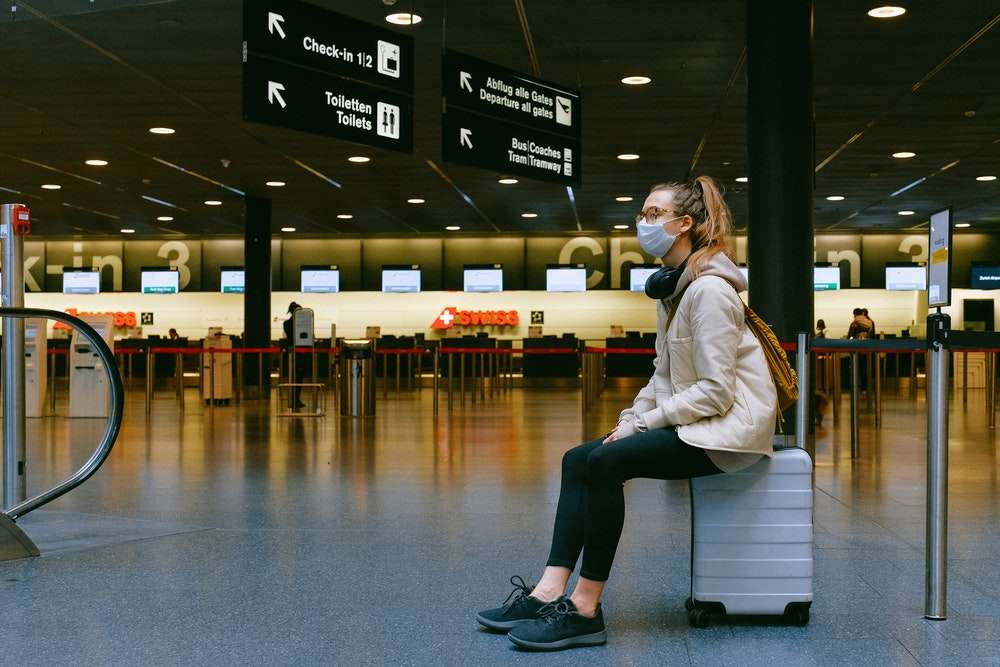Coronavirus travel advisory during a global pandemic is essential, whether you’re traveling alone or with other people. It is needed whether it is for domestic travel or international travel. It is especially needed when you’re traveling to places where there is a coronavirus outbreak.
Having the right coronavirus travel information is vital for your own health care and for public health. Not only to prevent a COVID-19 positive testing result but also to avoid infecting others.
When you are informed with the right travel health notice, you can do your part to prevent the spread of COVID-19 cases. This is crucial especially when it involves the coronavirus three C’s. These refer to Closed Spaces, Crowded Places, & Close Contact Settings.
During a coronavirus outbreak, traveling increases your chance of being exposed to COVID-19. Make sure to comply with coronavirus travel requirements. Refer to the Centers For Disease Control and Prevention CDC website.
There is a simple but effective way to protect yourself and others from coronavirus transmission & spread. This is to stay at home.
It doesn’t matter if it is a domestic flight or an international flight. There is always a risk of getting coronavirus. It is important to follow all coronavirus travel guidelines.
This is true for individuals traveling alone or traveling with others. You may feel well but it’s not a guarantee you are free from the virus that causes COVID-19. You can still infect others unintentionally. It would be inconsiderate if they get infected because of you.
You may not even exhibit obvious coronavirus symptoms (e.g. cough, a fever, or difficulty in breathing) but you are asymptomatic. If this is the case, you will endanger not only yourself but those you will meet along the way.
Is staying home not an option? Is moving from one location to another an urgent matter? Is traveling an unavoidable situation?
Make sure you have travel insurance. Above all, follow coronavirus travel advisory during a global pandemic.
Coronavirus Travel Advisory: Before You Travel
1. Find out if there’s high coronavirus transmission & spread at your travel destination.
Ninety percent of coronavirus outbreaks are found in major cities worldwide. It has worse effects in urban areas. It has something to do with city size and population density. More than that, there is a high level of interconnectivity to other locations both locally and globally.
It makes them high-risk areas. They are particularly vulnerable to the fast spread and transmission of the COVID-19 disease. The higher the rate of positivity for COVID-19 in your travel destination, the higher the risk of getting the virus yourself. Therefore, you must think twice and hard about your decision.
Is traveling worth the risk of getting infected? Is it possible to delay your travel plans? Can you stay at home until the coronavirus outbreak has been contained?
2. Find out all coronavirus travel requirements, travel guidelines, or travel restrictions at your travel destination.
All around the globe, countries issued their own COVID-19 travel rules. According to the World Tourism Organization (UNWTO), this is considered the harshest type of travel rules in history.
For inter-state travelers, check on public health websites of each state, local, or territory. You need to find out their coronavirus travel advisory. This may refer to travel entry requirements, travel authorization, and travel documents. Also, find out if you will need to fill out a traveler health form similar to what New York State requires from out-of-state travelers prior to arrival.
You may need to undergo testing for COVID-19 and provide proof of a mandatory negative PCR COVID test result. Some places accept rapid test results but some require a PCR test, which means you need to take it at least 72 hours before your departure.
You may need to comply with mandatory self-isolation for 14 days. You may need to obey the mandatory quarantine required in a designated COVID-19 facility.
3. Determine how high is other people’s risk of coronavirus transmission & spread in your travel destination.
Anyone can get infected by the virus that causes COVID-19. However, there are two groups of people who are considered at high risk. These refer to the elderly and the immune-compromised.
Do you feel homesick having been away for several months? Are you looking forward to visiting loved ones? Always consider if it’s worth putting their life in danger.
This is a crucial decision you need to make. Are these your grandparents? Are these relatives with underlying medical conditions? Are these friends who are sickly by nature? Maybe you can delay going to that particular travel destination for now.
Coronavirus Travel Advisory: Airborne Transmission
Before you travel, take note of this coronavirus travel advisory. The risk of airborne transmission is high for COVID-19 three C’s. These refer to Closed Spaces, Crowded Places, and Close Contact Settings.
There is a high risk of airborne transmission in virtually any place where COVID-19 infected patients move. When a coronavirus positive person coughs, sneezes, or talks, COVID-19 spreads through airborne transmission. This is because virus particles can stay in the immediate surroundings for hours.
This can happen in an airport terminal or as you go through airport security. It can happen inside the airplane, even if middle seats are blocked out to limit the number of passengers during flights. Now you know why we have very stringent coronavirus travel guidelines everywhere.
Coronavirus Travel Advisory: Inanimate Objects & Surfaces
There is another coronavirus travel advisory to take note of. Unlike in a human body, the virus that causes COVID-19 disease is easily exterminated from objects and surfaces using common disinfectants.
However, the survival of virus particles on food, money, or clothes is still possible. It depends on the type of material the item is composed of. It also depends on the temperature of its environment.
Here is a comparison of the coronavirus lifespan on inanimate objects:
- Copper surfaces: 4 hours
- Cardboard materials: 24 hours
- Plastic & Stainless Steel: 2-3 days
- Aluminum & Glass: 4-5 days
If the SARS COV-2 is anything like other coronavirus infectious diseases, it can last on inanimate objects and surfaces for over a week. This is true especially on dry and hard objects or surfaces such as paper money and doorknobs. A high-risk object is the outer part of face masks.
On the other hand, experts have studied that coronavirus transmission & spread is unlikely to happen on soft and porous objects or surfaces. These pertain to fabric or cloth. Virus particles tend to become less effective when it is dried out. The fibers on your shirt are likely to absorb any liquid away.
In addition, the virus that causes COVID-19 can get trapped between the fibers of the fabric or cloth. This will make it harder for cross-contamination of other objects or surfaces.
The chances of coronavirus transmission & spread from contaminated clothes are relatively low. However, it is still important to practice proper hygiene procedures while traveling.
- Wash your hands with soap and water for at least 20 seconds after touching foreign objects or contaminated surfaces.
- Use hand sanitizer with 80% ethanol alcohol or 75% isopropyl alcohol.
- Wear a mask, such as an N95 respirator, or other types of face coverings.
- Practice the 2-meter rule in face-to-face settings.
- If possible, avoid traveling and opt to stay at home.










